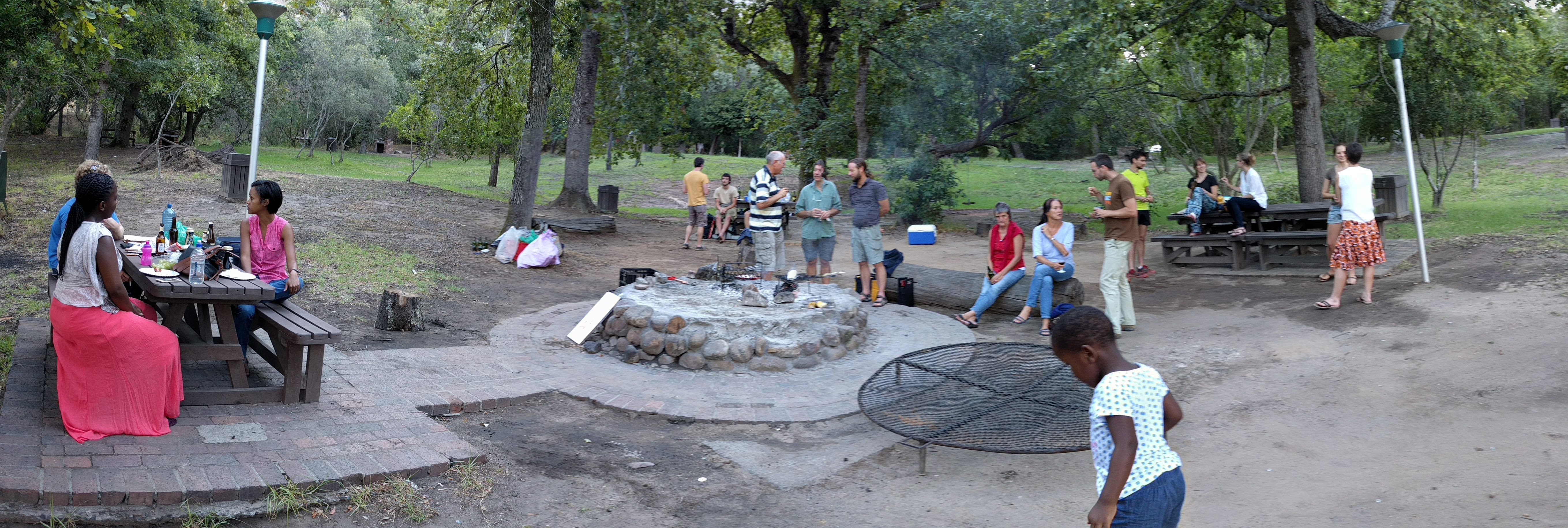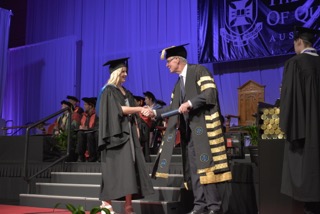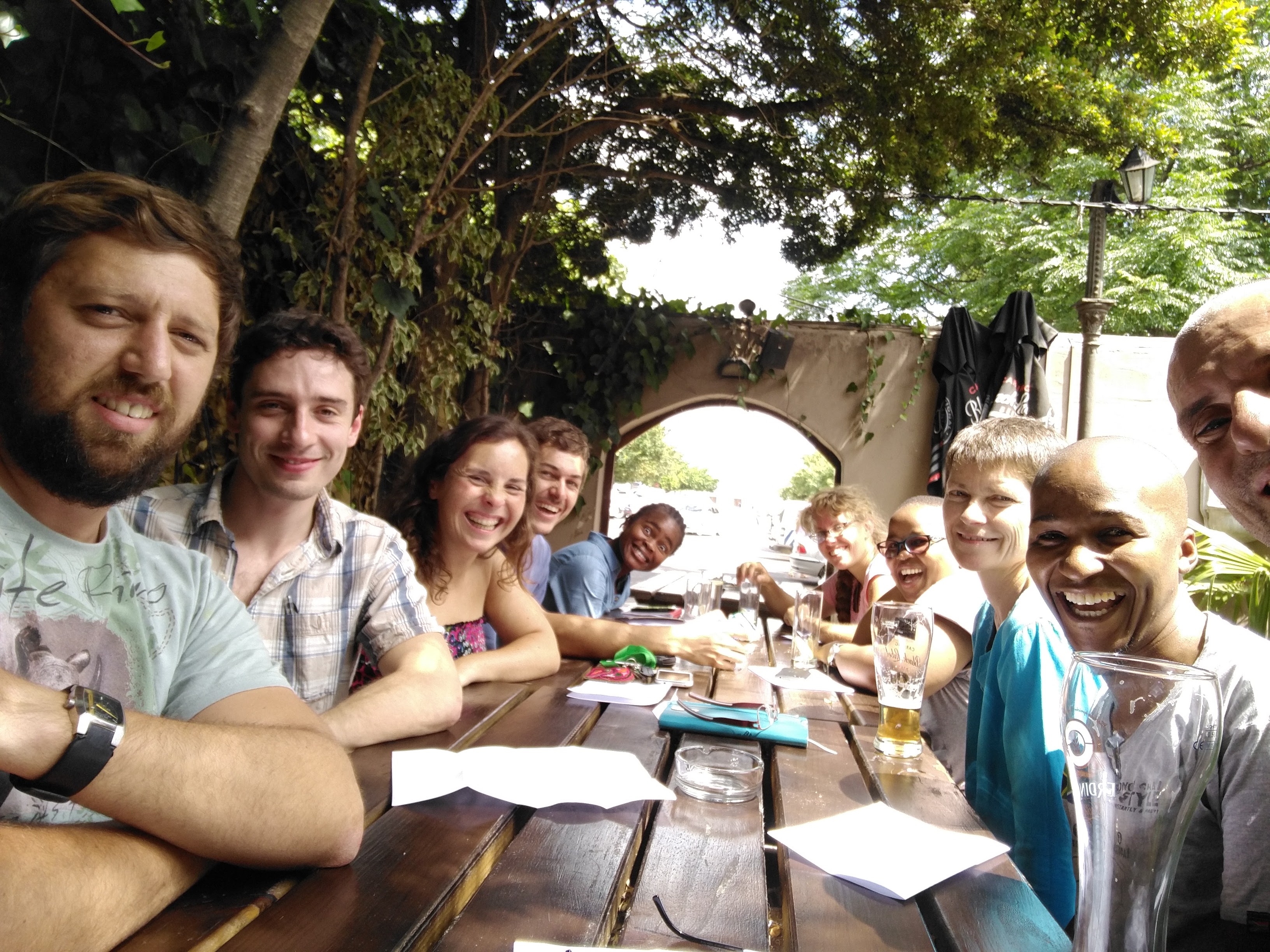Cape Herp Club Braai
The annual Cape Herp Braai was celebrated in good style in Jonkershoek. Can you spot the lab members below?

This is the major question behind articles in the journal Conservation Evidence. Today, Andre de Villiers published a short contribution to Conservation Evidence which shows that work over the last 5 years to remove African clawed frogs (Xenopus laevis) from an area they invaded in the Cape of Good Hope. Andre's article compares populations of the IUCN Endangered Cape platanna (Xenopus gilli) in an area near Kleinmond where there is no control of African clawed frogs. He found that when African clawed frogs were removed, the population of Cape platannas was healthier. In addition, he shows that regular monitoring of African clawed frogs is necessary to prevent invasion outbreaks, which are costly to remove.
Who graduated with a higher distinction for her MSc work based on acoustic Spatially Explicit Capture Recapture (aSECR) on Arthroleptella rugosa. Debra assessed the population size of the entire species on Klein Swartberg - the only mountain where this species exists. We said farewell to Debra in September when she went back to UQ to write up her project.

The aim of our lab meeting today was to sum up our project topics using only the top 1000 words in the English language. Scientists are often accused of not being able to communicate with members of the public because of the complex language we use. This is a real problem as we need to be able to communicate with everyone (not just each other). Giovanni recently published a an article in FrogLog, but how well did he do in using simple language that everyone can understand?

"I am looking at whether the body plan of frogs can be used to explain type of place that they live in. I am also trying to find out if body size, shape or number of young can explain the size of the area where these frogs are found. Many frogs are being lost because of the changes humans are making to the Earth and it is important to know what could have held frogs back in the past to make the best plans for the future."
"I study animals that live far from home. I am using complicated numbers to understand how these animals act and what they will do in the future. I would like to find how we can manage them in order to avoid that they become a problem for nature and people."
"Putting new
crayfish
outside their usual areas is an important problem, because they cause serious problems to many other animals. Although there is no
crayfish
in this part of the world, many from other places have been brought here. As such, there are now four different ones in this area, but people don't know where and how many they are, and how bad they are for the other animals that have always been here. In this study, we will look into where and how many these animals are in the study area and the problems that they cause to other animals, using both field work and a controlled approach. We believe this is
This week saw the publication of Mac's climate modelling paper where he determines the movement of the fynbos amphibian community in the face of global climate change. His paper shows convincingly that the rate of change for these amphibians is likely to be much larger over the next 50 years than it has been in the past 20 000 years.
Amphibians have been losing out in the Cape for 20 000 years mainly due to the rise in sea level and the loss of a lot of the Agulhus Bank (see also Schreiner et al 2013). However, future climate change will see the rate of loss accelerating. For more information, read the article: Mokhatla et al 2015.